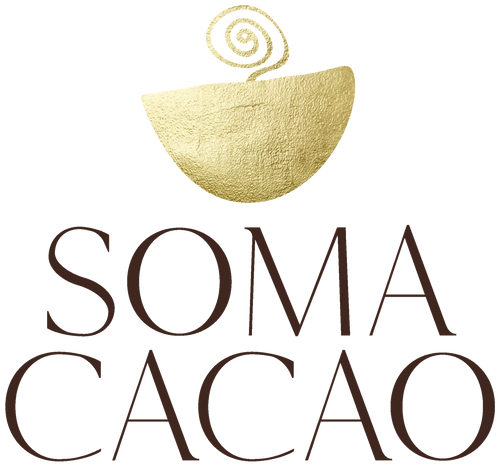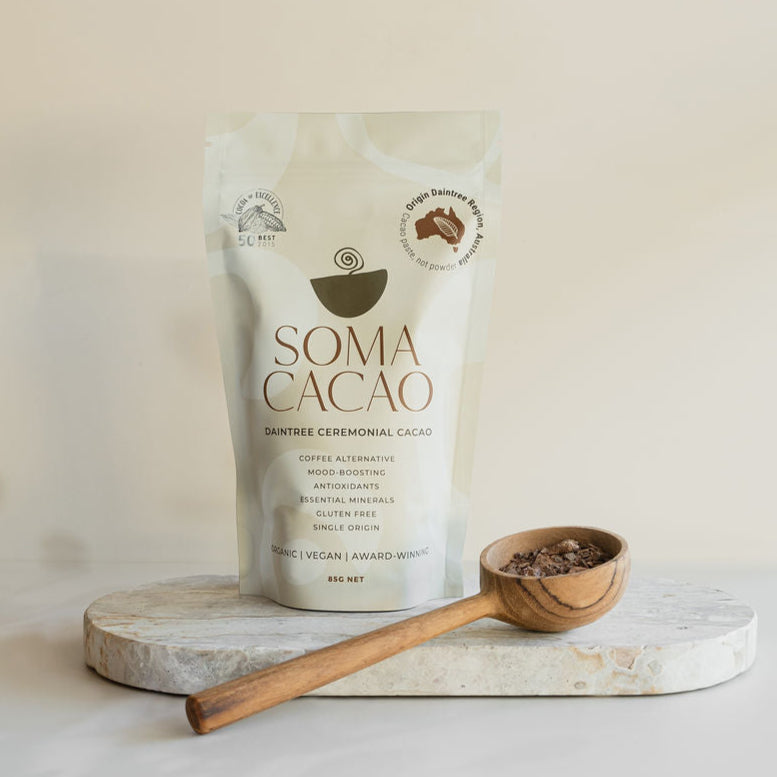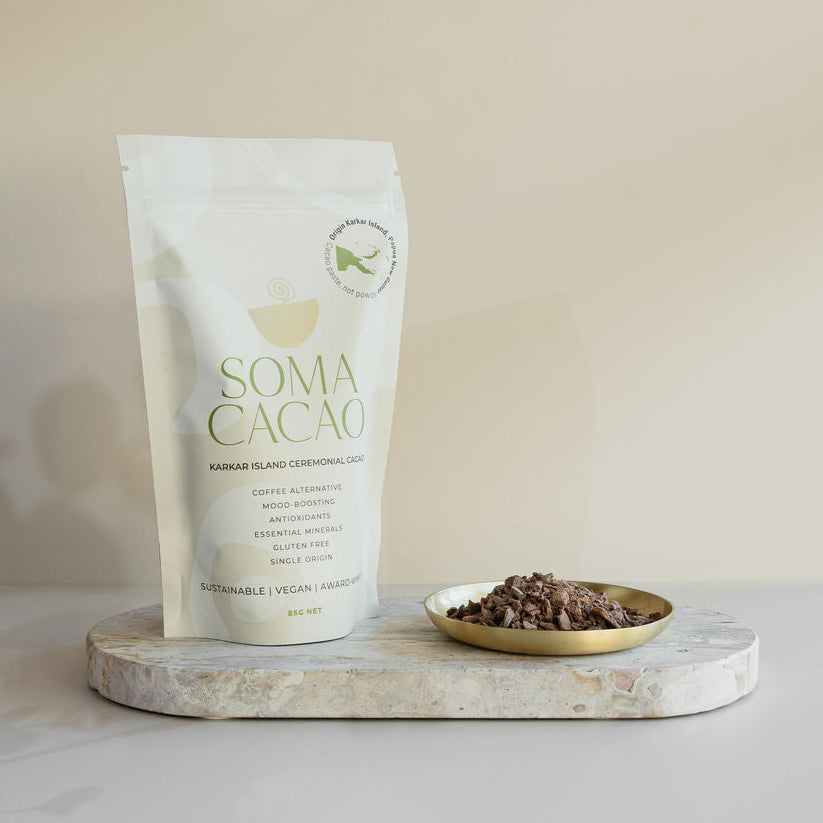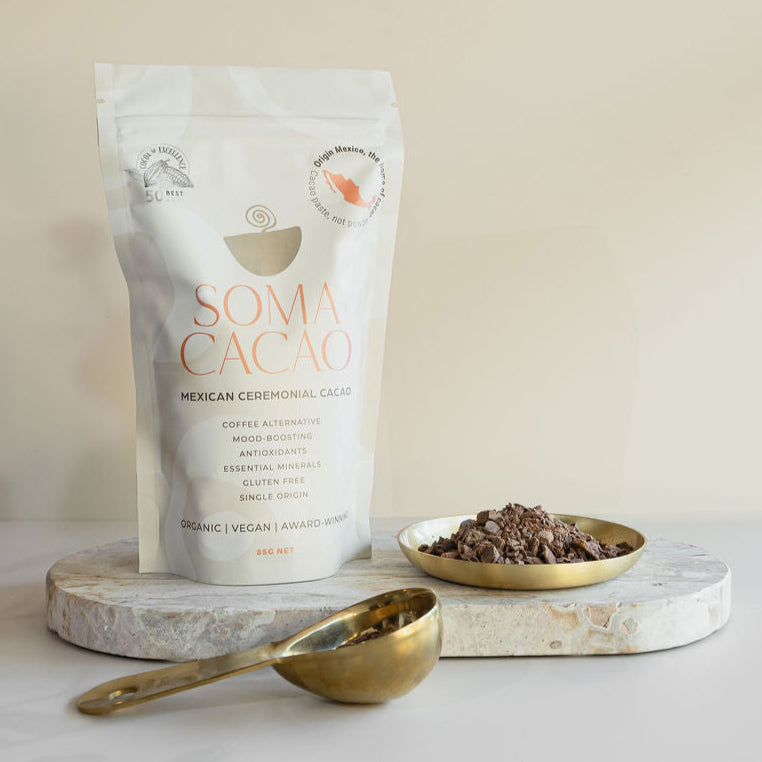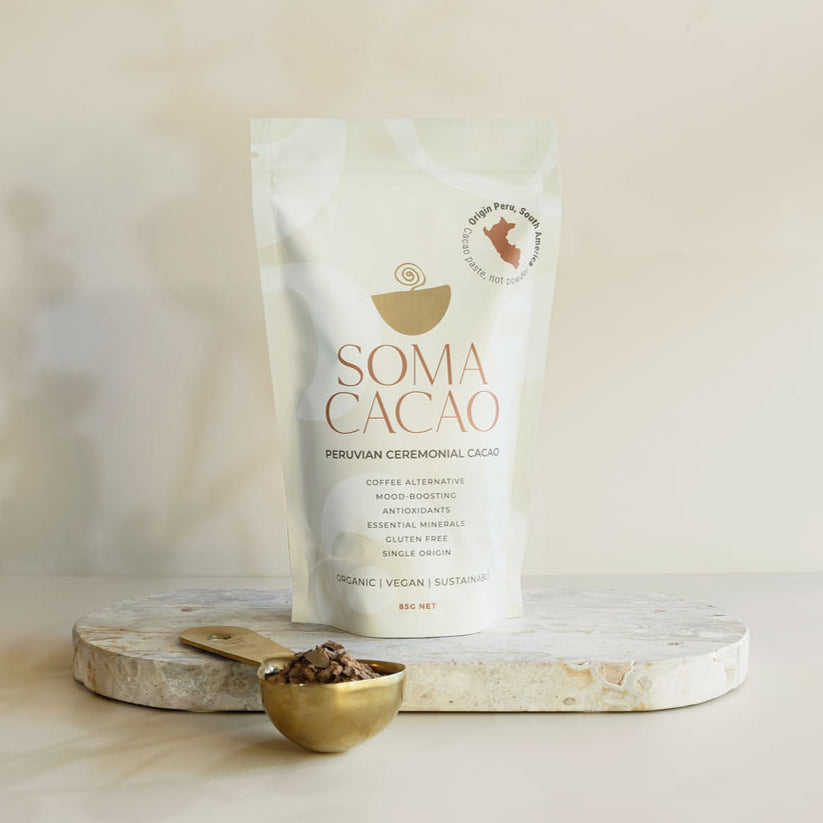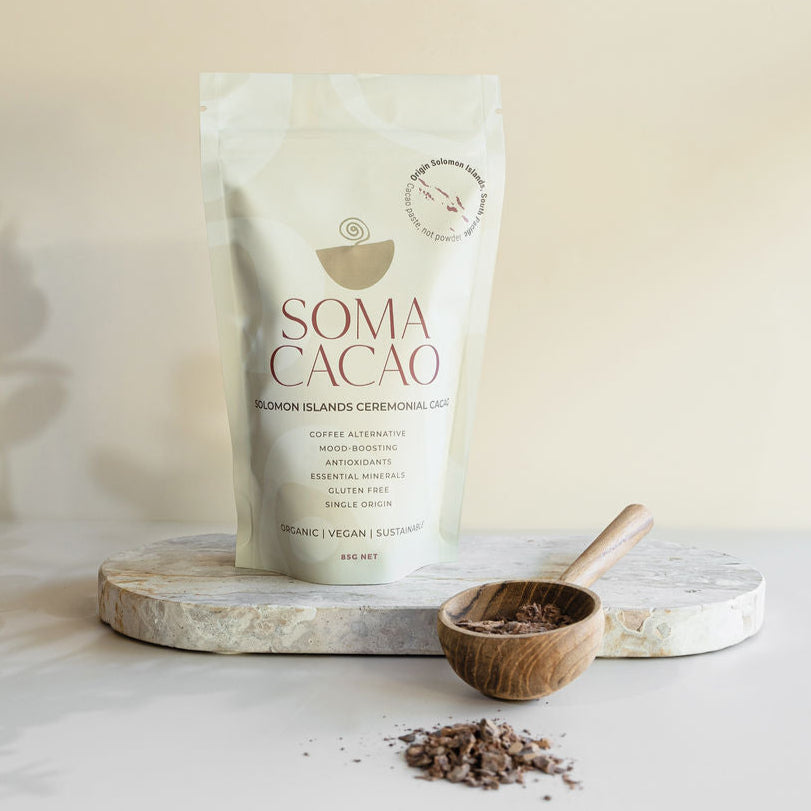5 Ways to Reduce Stress in 5 Minutes or Less

For much of my early adult life, I experienced mild, background anxiety. It wasn't debilitating or obvious, but it simmered in the background—a subtle tightness in my chest and throat, an uneasy churning sensation in my stomach, particularly bad in the mornings. It was something I learned to live with, but it wasn't until I discovered meditation that I realized how much I could change my mental and emotional state. The practice of meditation helped me become more aware of the fluctuations in my mental landscape, and I started to see a clear link between certain triggers and my anxiety. One of those triggers was coffee.
As my meditation practice deepened, the causal link between caffeine and anxiety became starkly obvious. The jittery, nervous feeling I experienced after a cup of coffee, combined with the rapid heart rate, seemed to be keeping my nervous system on high alert. At the same time, I was introduced to cacao, and I was immediately struck by how different it made me feel.
Cacao, particularly ceremonial cacao, has a calming, grounding effect on me. It's like a gentle effervescence, a bubbling of energy, but without the anxious, rapid energy spike that comes with coffee. It brings a feeling of openness and calmness—a state that feels more aligned with what my body needs. Coffee, on the other hand, stimulates the sympathetic nervous system, which is responsible for the "fight or flight" response. And let’s be honest—do any of us need more sympathetic nervous system activation these days?
In contrast, cacao helps activate the parasympathetic nervous system, also known as the "rest and digest" mode. This system helps our bodies function optimally, ensuring that we spend more time in a relaxed state, which is crucial for digestion, immune function, and overall wellbeing. While cacao won’t give you the same immediate energy jolt that coffee does, it supports a more balanced, sustained state of alertness that doesn’t leave you feeling overstimulated.
Despite my improved emotional balance, there are still days when anxiety creeps up, especially in the mornings. Over the years, I’ve learned a few simple techniques to reduce stress quickly—most of which can be done in five minutes or less. Here are my top five stress-relief techniques, especially number 5!
1. The “Candle Blow” Breathing Technique
Controlled breathing is one of the fastest ways to calm your nervous system. Deep, slow breaths help activate the parasympathetic nervous system, reducing feelings of anxiety.
- Set your timer for five minutes.
- Inhale deeply through your nose for four seconds.
- Exhale slowly through your mouth for six to eight seconds, pursing your lips as though you’re blowing out a candle.
- Repeat this process until the timer runs out.
Studies have shown that this type of slow, controlled breathing can reduce cortisol levels, the body's primary stress hormone. A 2017 study published in Frontiers in Psychology found that slow-paced breathing exercises have a significant calming effect, helping to regulate heart rate variability and reduce feelings of anxiety .
2. Body Awareness (Proprioceptive Input)
Engaging in activities that increase your body's proprioceptive awareness can help ground you and reduce stress. Proprioception refers to your body's sense of position in space, and engaging it through tactile or movement-based activities can be incredibly calming.
Some quick ways to engage your proprioception:
- Lie down under a weighted blanket.
- Give or receive a hug.
- Stomp your feet.
- Do star jumps, mountain climbers, or high knees.
- Give yourself a self-massage with oil, combined with your favorite essential oil.
These physical activities can stimulate pressure receptors in your body, activating the parasympathetic nervous system. Research published in the Journal of Autism and Developmental Disorders suggests that deep pressure touch, such as the sensation from a weighted blanket or self-massage, can reduce anxiety and promote a sense of calm .
3. Cold Exposure
Cold exposure is another highly effective technique to reduce stress. The sudden shock of cold water or a cold compress activates the vagus nerve, which plays a crucial role in controlling the parasympathetic nervous system.
Some quick ways to expose yourself to cold:
- Take a cold shower for at least 10 seconds.
- Splash your face with cold water.
- Place a cold pack on your chest, face, or neck.
- Run your hands under cold water.
A study published in Medical Hypotheses suggests that cold exposure can help lower cortisol levels and improve overall resilience to stress. By stimulating the vagus nerve, cold water immersion can also improve mood and reduce anxiety .
4. Forward Fold
Yoga and gentle stretching are known for their ability to reduce stress and calm the mind. A simple forward fold can help relax your spine, soothe your nervous system, and ground your body.
- Stand with your feet hip-width apart.
- Bend forward at your hips and let your upper body hang loosely.
- Relax your head, neck, shoulders, and jaw.
- You can grab opposite elbows and gently sway from side to side.
This pose, also known as Uttanasana in yoga, stretches the hamstrings and back muscles while helping you connect to your breath. Research in Evidence-Based Complementary and Alternative Medicine suggests that yoga poses like forward folds can reduce stress by lowering cortisol levels and promoting relaxation .
5. Drink Soma Cacao
Last but not least, one of my favorite ways to reduce stress in five minutes is to prepare a warm, comforting cup of ceremonial cacao.
- Prepare your cup of cacao using your preferred method (visit our preparation page for detailed guidance).
- Find a quiet, peaceful spot where you won’t be disturbed.
- Drink your cacao slowly, savoring each sip. Avoid multitasking and allow yourself to fully relax into the moment.
Cacao is packed with flavonoids, which have been shown to improve blood flow to the brain and reduce feelings of stress and anxiety. The presence of theobromine, a mild stimulant found in cacao, also promotes relaxation by improving blood circulation without the jittery side effects of caffeine. Studies published in Nutrients show that cacao’s bioactive compounds can enhance mood and cognitive function by stimulating the production of serotonin and dopamine .
Conclusion
Whether it’s a quick breathing exercise, a grounding yoga pose, or sipping on a warm cup of cacao, there are many ways to reduce stress quickly. These five techniques can all be done in five minutes or less, and they provide a simple, effective way to calm the mind and relax the body—helping you move through the day with more ease and presence.
References
-
Zaccaro, A., Piarulli, A., Laurino, M., Garbella, E., Menicucci, D., Neri, B., & Gemignani, A. (2017). How breath-control can change your life: A systematic review on psychophysiological correlates of slow breathing. Frontiers in Psychology, 8, 854.
-
Grandin, T., & Scarpa, A. (2010). The effects of deep pressure on anxiety. Journal of Autism and Developmental Disorders, 40(7), 933–941.
-
Shevchuk, N. A. (2008). Adapted cold shower as a potential treatment for depression. Medical Hypotheses, 70(5), 995–1001.
-
Ross, A., & Thomas, S. (2010). The health benefits of yoga and exercise: A review of comparison studies. Journal of Alternative and Complementary Medicine, 16(1), 3-12.
-
Scholey, A., & Owen, L. (2013). Effects of chocolate on cognitive function and mood: A systematic review. Nutrients, 5(10), 3850–3860.
- Tags: Mental Health
0 comments
